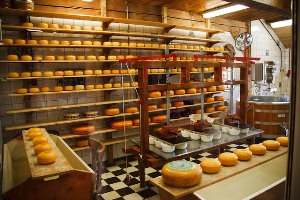Growing adoption of IIoT in food & drink sector to enable end-to-end supply chain traceability

A rapidly growing urban population and increased consumer awareness regarding sustainability are prompting food & beverage companies and manufacturers to employ digital solutions to ensure product quality. They have continuously invested in technological innovations with a focus on food processing, safety, and packaging to distinguish themselves in an intensely competitive marketplace.
Industrial Internet of Things (IIoT) technologies such as Big Data Analytics and Artificial intelligence (AI) are expected to play a huge role in accelerating and streamlining the manufacturing process through advanced automation and analytics.
“Although a late adopter of IIoT, the food & beverage industry is showing great eagerness to digitise its assets due to the rising need for traceability,” says Nandini Natarajan, senior research analyst, Industrial team at Frost & Sullivan. “IIoT will allow F&B manufacturers to collaborate and connect across different stakeholders involved in various stages of the food value chain. It enables seamless exchange of information and goods in different directions, unlike with traditional methods where only linear, unidirectional flow was possible.”
Frost & Sullivan’s recent analysis, Food & Beverages 4.0, 2018, identifies the ways in which IIoT can be implemented across all stakeholders in the food value chain. It also examines some of the top technology trends that are shaping the industry as well as the competitive landscape. Supported by established use cases, it covers the prospective value of investments and the ways in which they have been distributed in the industry ecosystem.
“As a first step toward digital transformation, food & beverage companies are integrating sensors directly into their legacy assets and configuring them to broadcast data to the cloud for monitoring key performance indicators (KPIs) and analytics,” noted Natarajan. “They are also employing a direct sampling procedure from automated plant equipment for real-time visibility into quality measurement. Meanwhile, some companies are investing in in-line quality data recording through inspection procedures.”
As it has become common to source food raw materials and ingredients from multiple vendors, the databases have become larger. Furthermore, food products travel more miles than before, which increases the risks of spoilage. These issues have created a strong demand for Big Data Analytics to aid in the management of food product traits and supply value chains to enhance food safety. IIoT will find wider application opportunities in this industry and vendors can make the most of this technology by:
- Developing new business models that focus on data, connectivity, and customer centricity along with data security
- Focusing on simple, easy-to-use products and integrated end-to-end solutions
- Partnering with select third-party applications
- Offering technically advanced packaging solutions that ensure sustainability without compromising on the nutrition of the foods
Food & Beverages 4.0, 2018 is part of Frost & Sullivan’s global Industrial Automation & Process Control Growth Partnership Service programme.
Comment on this article below or via Twitter @IoTGN
